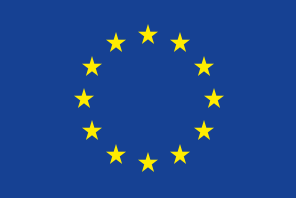Activities of the CRIC Project continued throughout the month of June, with participatory discussions related to tagging programme actions for the mitigation sector.
There were about 29 persons present for this activity, comprising of seventeen males and 12 women. Several stakeholders, including representatives from Samarinda City's State Electricity Company (PLN), academic representatives from UNMUL, GMSS (River Waste Collection) community organisations, as well as young people from the World Clean-up Day community, were present in addition to Samarinda's Climate Working Group (Pokja) members.
These stakeholders' participation in the CRIC project in Samarinda City will undoubtedly be valuable going forward because they can offer feedback and suggestions that are pertinent to the context of their programmes and, on the other hand, hear firsthand about the action programmes that the Samarinda City government and other stakeholders have jointly developed.. The Samarinda Pokja members who attended consisted of several OPDs or local government offices from different sectors, namely the Environment Office, BPBD (DRR Office), Settlement and Housing Office, Youth, Sports and Tourism Office, Health Office, BMKG (Meteorology and Climatology), Natural Resources Office, Women and Children's Office, etc.
The discussion was also opened by the Head of the Samarinda City Environment Agency, Mr Ir. Endang Liansyah, MP. To reduce emissions and the effects of climate change in Samarinda City, Mr. Endang stated that the working group must “actively participate in the entire series of CRIC activities".
The series of discussion began with the distribution of information regarding the completed tagging list and the allocation of time for the working group to examine and evaluate the completed programmes. Meanwhile, PLN representatives requested that its programmes – namely, quality management of power plant emissions and ESG Corporate for Energy Transition – be added on this occasion. In turn, the Samarinda City working group approved this motion because it is believed that even if the power plant in Samarinda City is now on standby, PLN should nevertheless help reduce emissions in the city.
In terms of sectors, the Samarinda city working group during the discussion comprised of several sectors, namely waste, energy, and AFOLU (Agriculture, Forestry and Other Land Use). Classic yet strategic tools for interactive discussion was given to each group, consisting of a card-tagging software, sticky notes, flipcharts and the likes. It was then continued by the working groups to categorise their climate action-related programmes. The working group selected several programmes and were then asked questions regarding the selection criteria, the number of programmes that should be prioritised, the implementation of the programmes and their challenges, implementation timeline, contribution to GHG emissions and how the programmes as well as its outputs relate to the findings of the sign smart key category analysis.
Afterwards, the working group further honed and focused on several programmes that were in the same sector because of the discussion. For example, "Provision, improvement and maintenance of waste facilities and infrastructure" became the main title of several related tagging programmes, including the construction and operation of TPS 3R (waste recycling centres), the provision of waste management facilities, construction, and operation of compost houses, etc. The second one is about "utilising and developing waste management technology," which includes creating solid waste fuel, recovering landfill gas, and creating waste treatment technologies. The second one, for instance, is concerned with "utilisation and development of waste technology" and includes the development of waste processing technology, landfill gas recovery, and solid waste fuel. Finally, the working group discovered that these two factors had a direct impact on Samarinda's key category analysis, which identified trash as the major contributor to emissions with a total contribution of 39.80%.
Furthermore, the utilisation of organic fertiliser (UPPO), which is the primary programme with sub-programmes like compost, organic fertiliser, biogas, forage for animal feed, and use for the community in the yard, is one of the other sectors that emerged in the discussion. According to the main category analysis of the agricultural section, which is in the top 3 positions in the Indirect N20 emission for manure management section, this also helps to reduce emissions.
Near the end of the discussion, participants moved on to the discuss the state of the mitigation effort, and the information requirements before the adaptation training. In fact, several organisations have pledged to assist with the data search, including BPBD, which will look for information on the whereabouts of homes in disaster-prone or areas where majority of water distribution occurs.

